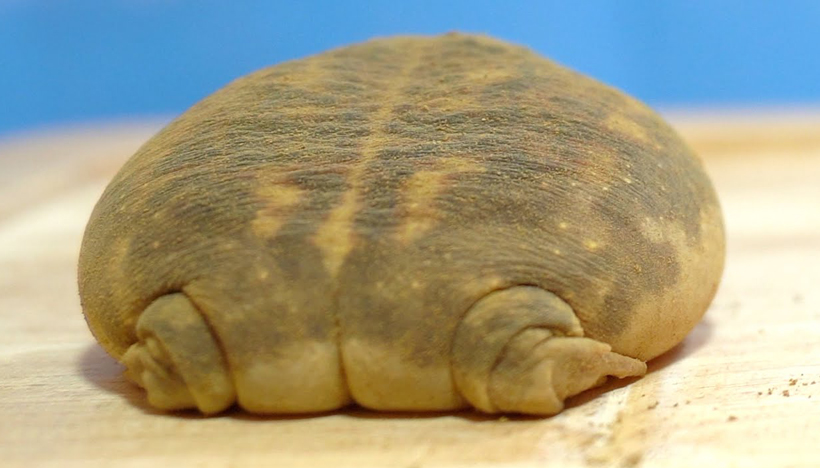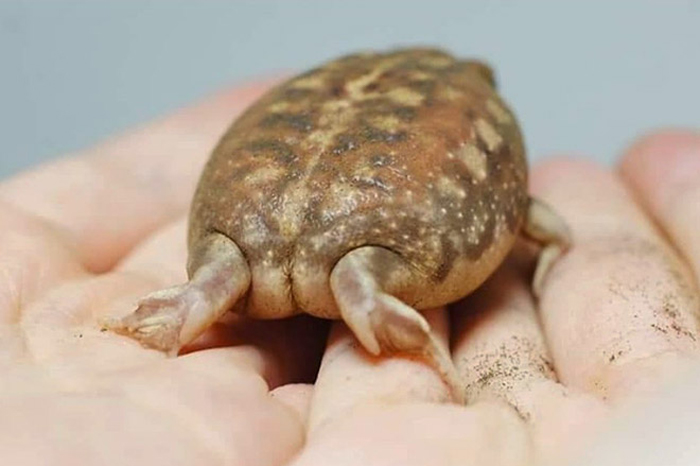Due to social media attention, many people have come to know about frog butt. Before that, a lot of people were still unaware of the fact that a frog has a butt. Well, it’s obvious, as the butt is not even distinguishable from other body parts.
So, how to identify frog butt 101: Everything you need to know about. Frog butt appears with a vent that serves as the excretory system and reproductive system. Moreover, the vent is so tiny that you might not even notice the butt. But in some frogs, the butt becomes separable due to the presence of butt cheeks.
However, some people are still unaware of some interesting facts about frog butts. To quench your curiosity about the frog butt, follow the below sections.
Frog Butt 101: Everything You Need To Know About
Generally, the frog butt is not prominent at all. It is only a flat part at the rear of the body, which has a vent. Scientifically, it is called a cloacal vent. The vent normally appears as a hole in the flat part.

Additionally, the frogs do not even need those cheeks as they do not sit on their butt. But in some frogs, the butt appears with prominent cheeks. Well, this is quite similar to the human butt cheeks. Instead, fatty frogs might develop cheeks as they grow up.
Mostly, toads tend to have cheeks in the butt with a combination of thin legs. Apart from that, this varies from species to species.
Frog Butt With Cheeks
Some frogs might appear with cheeks on the butt that seem more like a human butt. Following is the list of frogs that get butt cheeks in their lifetime.
- Rain frog
- Toad
- European common frog
- American tree frog
- American bullfrog
- African bullfrog
- African clawed frog
The Most Famous: Rain Frog Butt
Rain frog butt is the most hyped frog butt on social media. Well, it is also considered a healer and adorable in the eye of the observer.

It’s because this frog has a bulk butt with tiny legs. Consequently, it seems super adorable and funny to observe how they move.
Moreover, the frogs are also larger than the normal size. That’s why the butt is more visible and prominent.
The Function Of Frog Butt

The frog butt is the excretory and reproductive system of the frog that comes with a vent.
Every animal has an excretory system by which they dump toxic and waste materials from their body. In the case of frogs, they dump all types of waste, urine, and feces through the vent on the butt.
Apart from that, male frogs release sperm, and female frogs release an egg through the vent. Thus, they are involved in mating. Not just that, frog butt also helps to attract female companions for mating.
Communication Using Frog Butt
One of the most interesting facts about frogs is they communicate by shaking their butt. It is more likely to be a threat to the other male frogs if they try to invade the territory. Otherwise, they are trying to win against the opposition to attract female frogs.
Nevertheless, Red-eyed tree frogs tend to shake their butt when they find some uninvited guest. There is also a competitive competition among the frogs to attract the female frogs.

This occurs for minutes to hours, depending on how fierce the competition is. As they start, they vibrate or shake their butt vigorously. Once they are out of the competition, they stop vibrating their butt. Otherwise, they get involved in a fight if they have no choice left.
Generally, shaking the butt is a way of negotiating with the competitor. When the negotiation fails, the fight starts. But it rarely occurs as most of the time, negotiation results in success.
Bugs Getting Alive From Frog Butt
The digestive system produces acids, which result in high acidic PH in the stomach. Consequently, hardly anything can be found alive in the digestive system. Similarly, bugs can not survive when frogs hunt them down.
However, beetles can get alive from the frog butt within 6 hours through the vent. Through research, it was also observed that beetles can not survive if their walking speed is reduced.
Well, it’s hard for the bug to get away from the caught frog. But some bugs might be able to escape from the frogs caught because they can walk in the digestive system of the frog and can come out through the vent.
Here’s a video that shows a beetle getting out of a frog butt;
Nevertheless, an experiment was done by putting waxes on beetles and it was found that the traveling time through the digestive system depends on the speed of the bug.
As a result, they could not survive because of the reduced movement. Thus, it was proved that the pathway and movement of the bug decide if it can escape alive or not.
While the anatomy and function of the frog’s posterior might tickle your curiosity, the behaviors and habits of these amphibians are equally intriguing. Have you ever witnessed a frog resting and wondered about its sleep patterns? There’s a peculiar tendency many notice: these creatures often seem alert even during restful periods. Dive deeper into this behavior with our article exploring the question, do frogs sleep with their eyes open? Further, to understand the broader scope of their rest habits and how they differ from ours, check out our comprehensive piece on how frogs sleep.FAQs
Let’s go through some of the frequently asked questions by you guys.
No. Determining the gender of a frog by looking at its butt is not a reliable method. Certain physical characteristics can help differentiate between male and female frogs. So, examining the butt alone is insufficient for accurate gender identification.
Frogs have a self-cleaning mechanism for their cloaca. They use their hind legs to rub and wipe the area, removing any debris or waste material that may have accumulated.
The bright colors observed on the posterior region of certain frog species serve various purposes. In some cases, these vibrant colors act as a warning signal to potential predators, indicating that the frog is toxic or unpalatable.
Bottom Line
Due to the numerous pictures circulating on the internet, it is obvious to get curious about frog butt. Here, frog butt 101: everything you need to know about covers some interesting facts about the frog butt.
This includes how the frogs use butt to attract others and also how a tiny beetle can survive even after getting eaten by a frog. Nevertheless, we hope that we were able to pique your interest and give you a better understanding of these creatures.

Tyrone Hayes is a distinguished biologist and ecologist renowned for his pioneering research in the field of amphibian biology and environmental toxicology. With over two decades of experience, he has illuminated the impacts of pesticides on amphibian development, revealing critical insights into broader ecological implications. Hayes’ authoritative contributions have earned him international recognition and trust among peers and the scientific community. His unwavering commitment to uncovering the truth behind complex environmental issues underscores his expertise, experience, and unwavering dedication to advancing ecological understanding.
